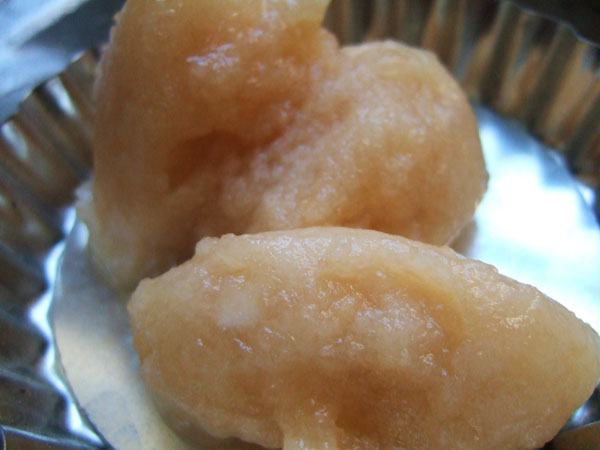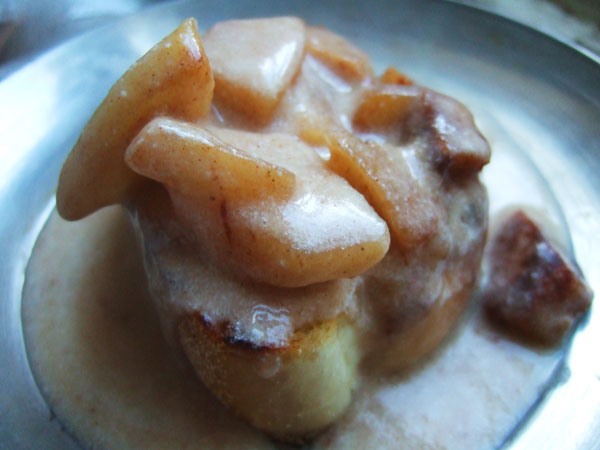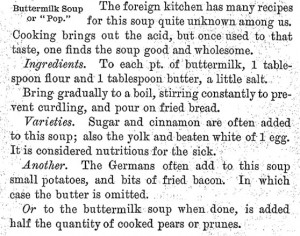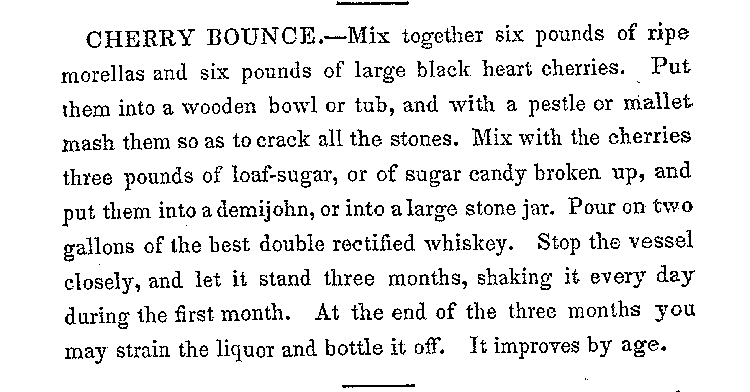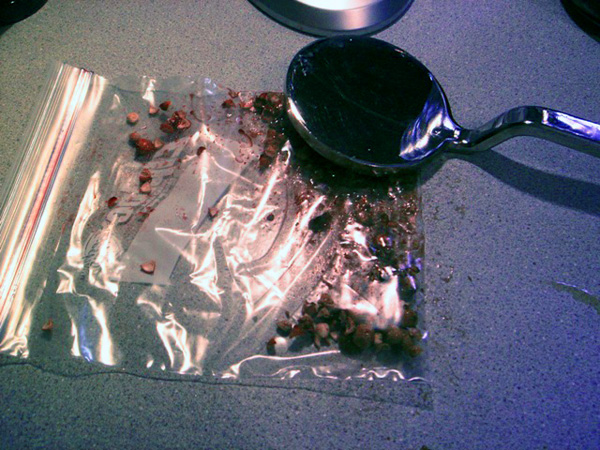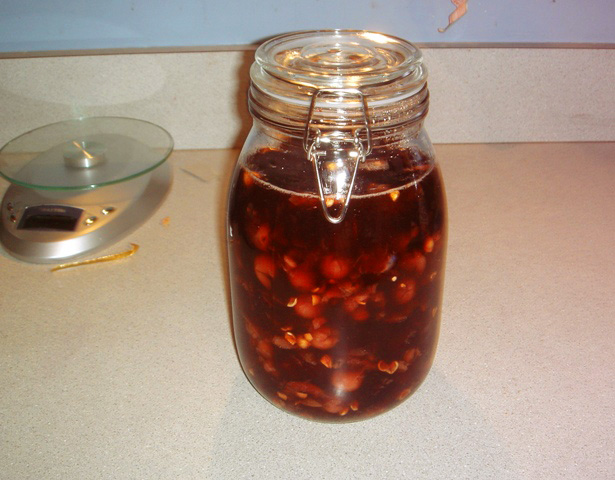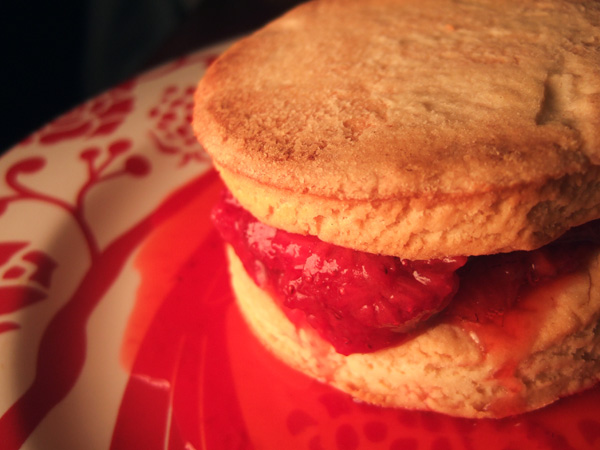 The possible origin point of the strawberry shortcake.
The possible origin point of the strawberry shortcake.
I work on Saturdays and my morning path to mass transit takes me past the Roosevelt Island Greenmarket. Â It’s run by a friendly Mennonite family, which is a sight for sore eyes for this Midwestern girl. Â And it’s always stocked with the freshest, most delicious produce I have ever had.
Recently, the pints of bright red, sunshine-grown strawberries have been screaming at me to take them home. Â So I handed over my dollars and bought them – because I wanted to try this recipe for Strawberry Cakes.
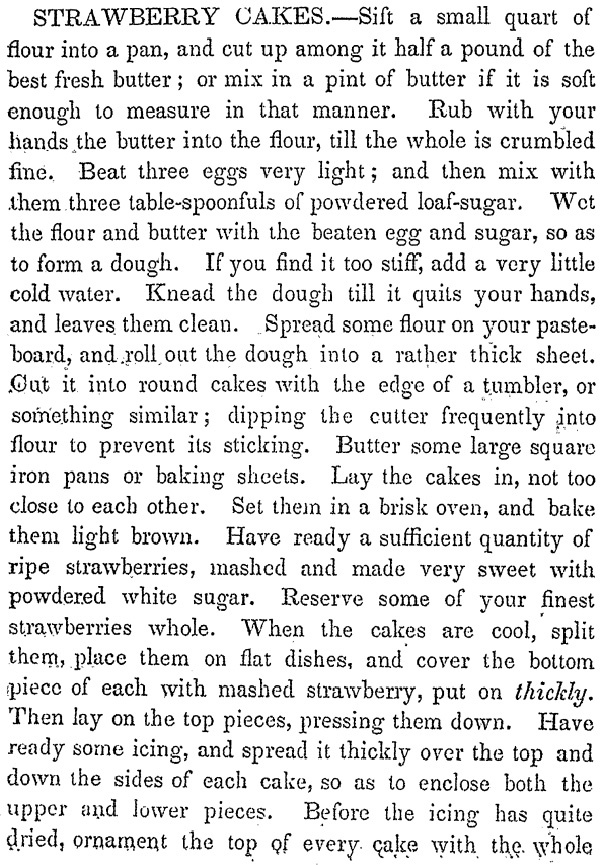
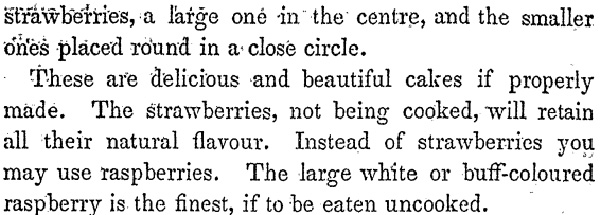
This recipe comes from Eliza Leslie’s 1847 cookbook The Lady’s Receipt Book. Â It’s the oldest recipe I’ve found that resembles modern day strawberry shortcake: biscuits layered with mashed strawberries and topped with frosting.
This recipe contains some lovely bits of prose:  “Rub with your hands the butter into the flour, til the whole is crumbled fine…Knead the dough til it quits your hands, and leaves them clean.”  It’s a beautifully written recipe, although the paragraph form renders it a bit impractical.
I was intrigued by how this recipe treated the fresh strawberries: “Have ready a sufficient qauntity of ripe strawberries, mashed and made very sweet with powdered white sugar…the strawberries, not being cooked, will retain all their natural flavor.”
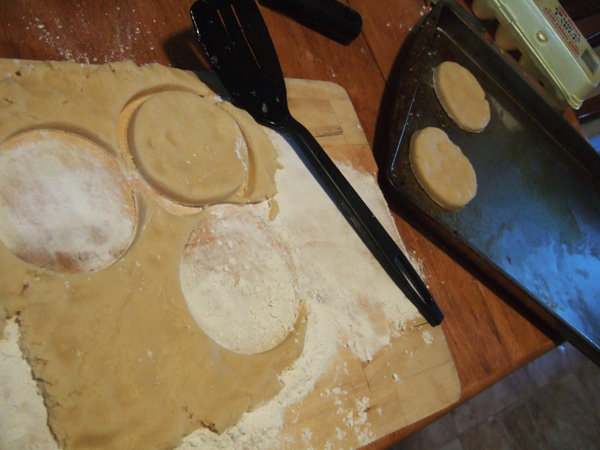 Cutting out the biscuits/cookies.
Cutting out the biscuits/cookies.
When I prepped the dough, it came together very quickly; it was easy and kinda fun. But I did notice that there was no leavining in the recipe: no baking power or yeast to make it rise! Â After I cut the biscuits and baked them, they came out of the oven looking very much as they had gone in: flat. I was worried they would be too dense and the berry sandwich would not work at all. Â I thought that if you tried to take a bite, the berries would moosh out all over.
But here’s where I was surprised:  instead of being rock hard, the biscuits were buttery and crumbly. Both in taste and texture, they resembled short bread cookies; which makes a lot of sense of of the name “strawberry short cake.† It’s interesting that we’ve replaced these buttery disks with pound cake, angel food cakes, or a fluffy biscuit.
The cookie crumbled and mixed with the berries and frosting. I ate my short cake sandwich moments after spreading it with strawberries and frosting it.  I was worried that the strawberry juice would make the cookies mushy and gross.  I was wrong again: when berries soak into the shortbread rounds, it makes for an even happier marriage of fruit and cake.  Try for yourself:
***
Strawberry Cakes
From The Lady’s Receipt Book by Eliza Leslie Philadelphia: Carey And Hart, 1847.
4 Cups Flour
4 Sticks Butter
2 Large Eggs (or 3 Medium Eggs)
3 Tablespoons White Sugar
Super Fine Sugar (to taste)
1 Pint Strawberries
1. Preheat over to 450 degrees. Â Rub butter into the flour with your hands, much as you would when making pie crust, until it crumbles.
2. Beat egg until light in color, then whisk in sugar.
3. Â Add egg to butter and flour, and knead with your hands in the bowl. Â When the dough forms a ball, remove from bowl and place on a floured surface. Â Continue kneading until dough is springy and keeps its shape. Â If dough is too dry and crumbly, add a little cold water.
4. Roll out dough on a floured surface into a “rather thick sheet.” I rolled mine about 1/2 inch thick. Â Cut with a tumbler or a biscuit cutter dipped in flour. Â Place on a butterd, non-stick, or parchment lined baking sheet.
5. Bake for 20 minutes, until golden brown.
6. In the meantime, sort out a few lovely strawberries to adorn the top of the cakes. Â Mash the remaining strawberries with super fine sugar to taste. Â The amount will very depending on the sweetness of the berries. Â I used about a 1/4 cup of sugar.
7. When the shortcakes are cool, split them (I did not do this step, I just made cookie sandwiches) and spread the center with mashed strawberries. Â Spread the top and sides with a royal icing. Adorn with a whole, ripe strawberry.
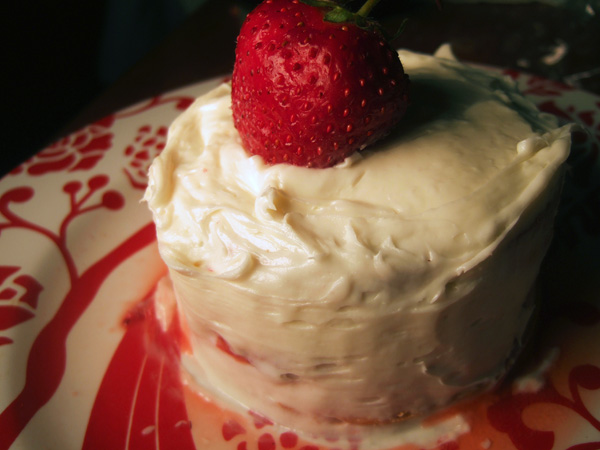
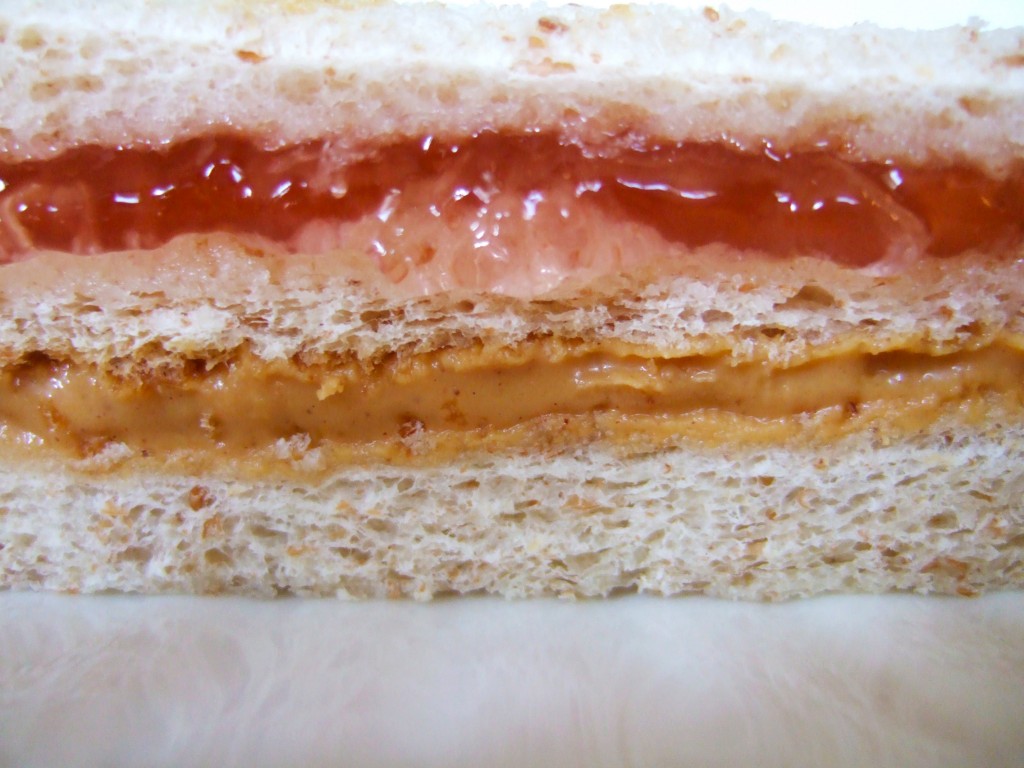 An original recipe PB & J, made with crab apple jelly.
An original recipe PB & J, made with crab apple jelly.